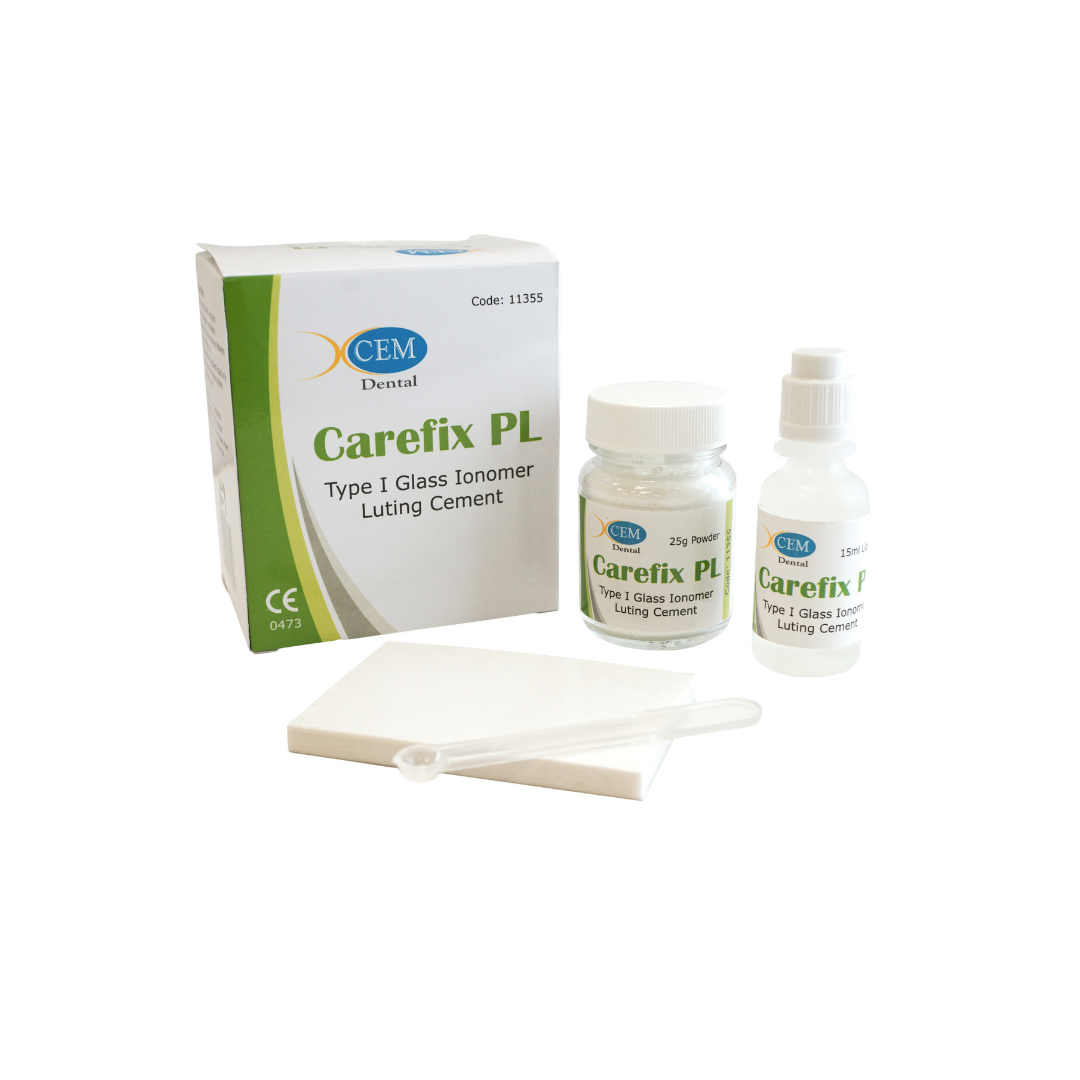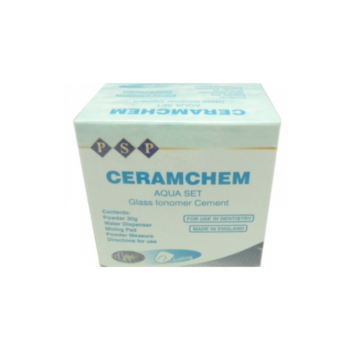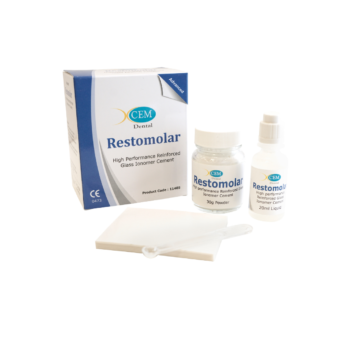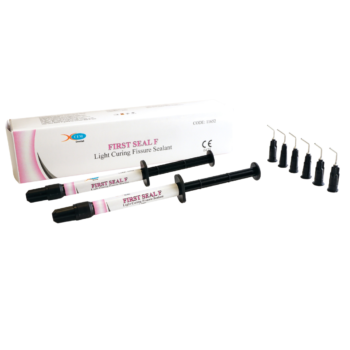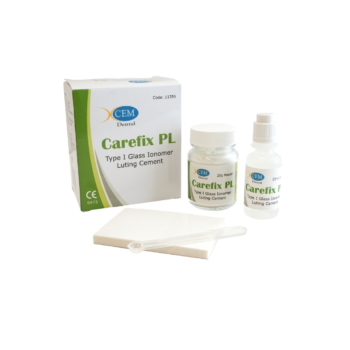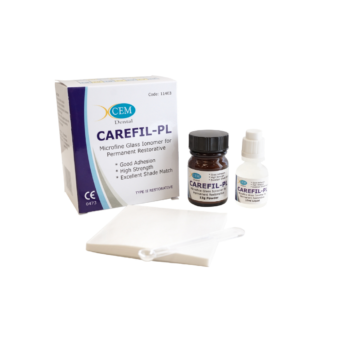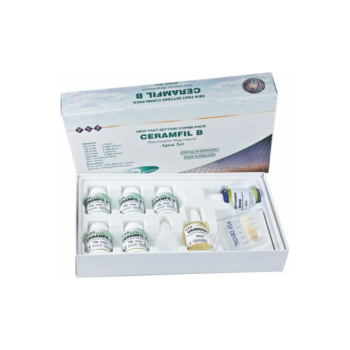CAREFIX PL powder/liquid GI luting cement is used for cementation of inlays, crown, bridges, facing, orthodontic purpose, cavity linings under amalgam, composite, silicate and acrylic restorations, temporary fillings and deciduous teeth fillings.
In stock
Carefix-PL 25g Powder 15ml Liquid | Dental Type I GI Luting Cement
Dual cure resin-reinforced glass ionomer cement
- Refractive index match to natural tooth refractive index
- Appropriate setting time
- Easy to use
- Easy to mix
- High translucency
- High Compressive strength
- Appropriate working time
- Make strong bond to dentin
£19.99 inc. VAT
| Select Shade | A1, A2, B1, B2, C1, D1 |
|---|
For cementation of inlays, crown, bridges and facing and orthodontic purpose. For cavity linings under amalgam, composite, silicate and acrylic restoration. For temporary fillings and deciduous teeth fillings.
Indication:
Permanent luting cement for crowns & bridges.
Strong cavity liner.
Strong temporary dressing.
Presentation:
25gm Powder
15ml Liquid
Measuring scoop
Mixing pad
Instruction sheet
Mixing Time:30 Seconds.
Working Time:2.5 minutes
Set Time: 4.5 minutes from start of mix
Invert powder bottle a few times to fluff up powder. Level fill powder scoop without compressing powder. Always replace the lid on the bottle after use and between uses. Liquid bottle should be inverted and squeezed to give required drops of liquid onto mixing pads. Always replace lid immediately as liquid may get dry and this can cause blockage of liquid tip. Initially add first heap of powder and mix to homogenous paste by using metal spatula. Add rest of powder incrementally until the required consistency. The mixed material should have a glossy surface and is ready for use immediately.
Mixing Technique:Tap powder bottle on firm surface to condense powder. Fill the measuring scoop to excess without packing, then level off with a spatula.
Place the powder on provided mixing pad.
Hold liquid bottle in a vertical position and dispense the number of drops required. Squeeze the bottle and then release pressure after each drop separates from bottle.
For Cementation:
2 Measure of powder
3 drops of liquid
The ratio for test purposes is 1.00-1.30g powder: 1.00g of liquid at an ambient temperature of 23± 1°C and it should be applied immediately on completion whilst it has a glossy surface. Do not use the cement after it has set to the stage where it starts to ‘Cobweb’.
For Linings & fillings:
2 measure of powder to 2 drops of liquid.
The ratio for test purposes is 2.00-2.40g Powder: 1.00g of liquid at an ambient temperature of 23± 1°C.
Incorporate powder rapidly into the liquid and mix to a putty consistency within 30 seconds. This mix gives a working time of approximately 2 minutes 30 seconds ± 1°C and should be applied immediately on its completion whilst it has a glossy surface.
General Considerations:
Remove excess cement before it reaches a rubbery consistency or after complete setting.
Plastic or stainless steel spatulas are recommended for mixing. It is advisable to wipe the spatula and instrument clean with a wet tissue under rubbing water immediately after use and before material has set. As with any cements, the addition of more powder or higher ambient temperatures than those specified, results in a reduction of working time. Working time can be extended by suing a per-chilled glass slab.
Polycarboxylate liquid should be dispensed only when required. Exposure to air leads to loss of water.
Caution:
Liquid:
Liquid is adhesive and contains Polyacrylic acid. Spatula and instruments should be wiped clean before setting.
Spillages should be cleaned immediately.
In case of contact with skin/eyes, wash immediately with plenty of water, or use eye-washer to wash the eyes. Seek medical advice if necessary.
Powder:
Powder is very fine and may give rise to dust. It is recommended that lids should be replace immediately after use.
Storage: Store at normal room temperature in a sealed form.
Technical Evaluation:
Use 3.45g-3.65g of powder per 1g of water at 23°C and 50% humidity.
RH film thickness-less than 16.
Comprehensive strength: over 92 MPA
Diametric tensile strength: over 11MPA
Water leachable content: less than 1% W/W

